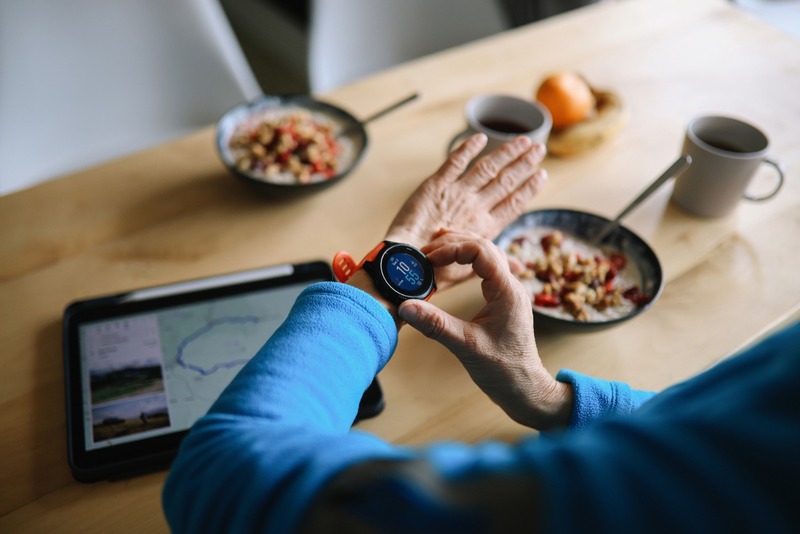News
Seeking the Whole Story
This article was originally published in the Vail Daily on Tuesday April 12 2016 by Kirsten Dobroth
Editor's note: This is the second article in a two-part series about how to be an educated scientific consumer. Find the first article at www.vaildaily.com.
Getting to the bottom of the latest chatter about a particular study can be difficult to say the least researchers oftentimes have difficulty reading through published studies themselves with an entire part of academic training for various scientific fields spent teaching future doctors scientists and researchers how to examine published studies.
And while few of us have had the training to fully comprehend the intricacies surrounding whatever study has most recently caught the media's attention there are ways to page through bodies of research with a more objective lens in order to understand some of the speculation surrounding a given topic.
EXAMINING THE QUESTION
One of the first ways to delve into a published piece of research is to look at the introduction of the study which typically identifies both the question researchers were trying to answer and their hypothesis for the potential outcomes of the experiment.
Dr. Barry Hammaker a surgeon and chief clinical officer at Vail Valley Medical Center said looking at what type of question researchers were trying to answer when developing a study can help readers of the publication understand why an experiment was designed a certain way or what kind of outcomes the researchers were trying to induce in their study.
One thing I like to look at is what is the question and why are they asking the question? he said. Are they trying to learn more about a previous study or are they trying to answer a very specific question related to treatment outcomes?
Jason Moore Ph.D. P.A. a researcher and epidemiologist at the Vail Valley Medical Center similarly said that looking at these initial parts of a published piece of research can give readers a better idea of what the experiment was actually designed to test.
A hypothesis is the researcher's idea for the answer to the question and that in addition to the actual question can give a good idea of what is the actual intent of the study Moore said. Knowing the intent before looking at other pieces of the study can help identify parts of the study that might not have been adequately designed to test the hypothesis or areas where researchers were trying to draw larger conclusions than their studies support.
LOOKING AT THE POPULATION
For larger population-based studies there often tends to be a bit of fluctuation between different bodies of research which is in partly due to characteristic discrepancies in large pools of people. Researchers may spend years following a given group of study participants and may have to rework parts of the experiment due to variables in the population being studied that affect the data gathered.
Much of Moore's work involves larger population-based studies such as the research he is currently doing as part of the Colorado Department of Health's attempt to understand any type of link between marijuana consumption and on-mountain injuries during the ski season. Moore is in his second season gathering data largely to try to build a stronger data set showing a trend one way or the other. He explained that the subjects being studied and the environment in which data is being gathered about them are both important parts of analyzing what type of variables might affect the outcome of an experiment.
Looking at the people being studied and the surrounding environment of the study period is a great way to analyze how encompassing the study is and looking at differences in research populations can help explain big differences between studies and different findings Moore said. Hammaker said that in addition to the size of the population being studied another factor that can have an impact on researchers' finding is where these populations being studied exist and what type of variables they might impart on the data that'sgathered.
In large population-based studies it's important to look at where the study was done if there were multiple hospitals or medical schools versus a single institution along with how many subjects were actually in the study he said.
READING THROUGH ASSOCIATED STUDIES
And while starting to peel through the layers of a particular study by looking at a few parts of the experiment is helpful the best way to really understand a trend in data or what the newest research findings really mean is to examine older studies about a subject along with any new research that comes out on a topic. Because of how hard it is to pin a causal relationship to something that's being tested examining the trend that different studies have gathered about a topic is the best way to comprehend the consensus on a subject. Hammaker said understanding that there's more to the subject than the one published study that's currently popular is imperative in understanding trends in data and consensus on a particular topic.
I think a very important concept that people need to realize is that the medical literature is telling a story and each individual study is like a chapter in that story and the mistake people make is to latch on to an individual study instead of looking at it from beginning to end he said.
Having that awareness when consuming the latest reporting on health trends environmental issues and a wide range of other topics is important to have a bit of objectivity especially since the vast majority of people that are called upon to interpret new research for different media outlets don't have much of a background in reading studies either. Sometimes this lack of knowledge can lead to different media outlets or journalists pulling vague associations out of a study for a shock factor although anyone versed in looking through research publications would probably realize that these loose correlations don't mean much to the scientific community.
What someone is going to read in the newspaper or see on the internet that gives them an awareness that something exits and if you want to understand it better dig deeper into the subject Hammaker said. Look at prior studies and keep up with future studies and keep in mind that what you hear or read about something should give you an awareness not be the end all for your opinion.
More News
-
New!
More

First Chair to Last Call: What Does Alcohol Really Mean For Your Health?
In nearly every Colorado ski town, some iteration of the neon sign blares its play-hard-party-harder anthem. It’s a not-so-subtle nod to mountain party culture, a lifestyle that normalizes combining sports and outdoor adventures with heavy drinking and partying. In Eagle County, après culture, high-altitude living and outdoor performance have coexisted for as long as locals have been sliding on snow. But how much is too much at altitude? And what role do social support systems play in helping residents find balance?
-
New!
More

Counting More Than Steps: How Wearables Can Help (or Hinder) Your Health
From step counts to sleep stages, heart rate variability to blood sugar spikes, wearable devices are giving us a front-row seat to what’s happening inside our bodies. Strapped to wrists, slipped onto fingers or wrapped around our biceps, wearables like the Oura Ring or Whoop strap promise insight and advice in the quest for better health.
-
More

Cass Barham and Sarah Crabtree Honored As Recipients of Vail Health Elevate Award
Cass Barham and Sarah Crabtree, both lab techs at Vail Health Hospital, have been named recipients of the Vail Health Elevate Award. Vail Health created the Elevate Award in June 2022 to give patients and their families an opportunity to nominate and thank employees who have touched their lives in some way.
